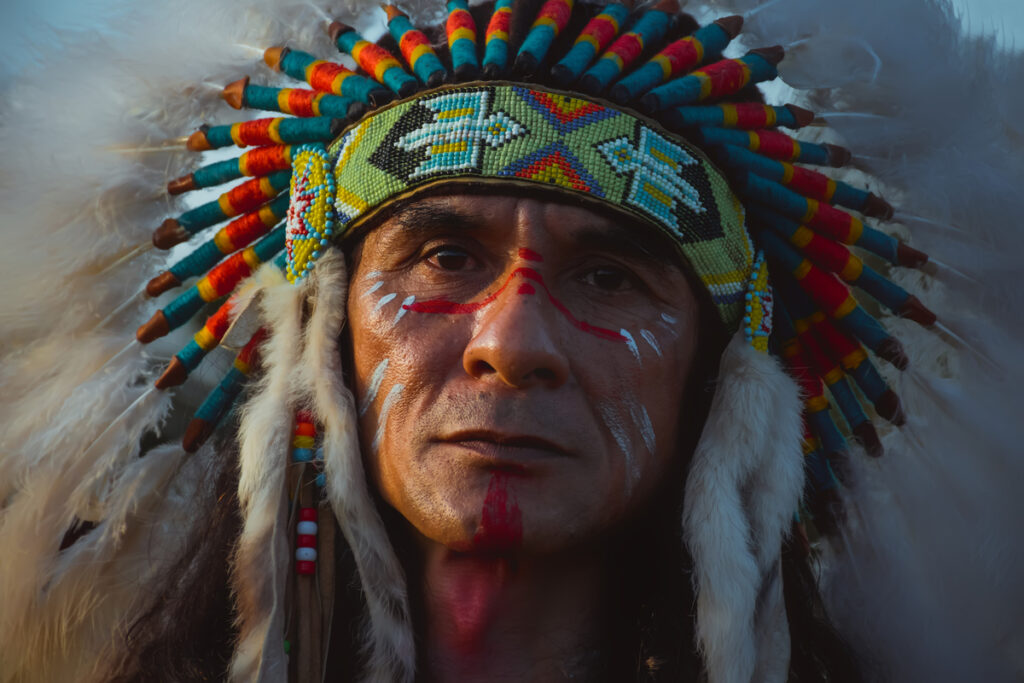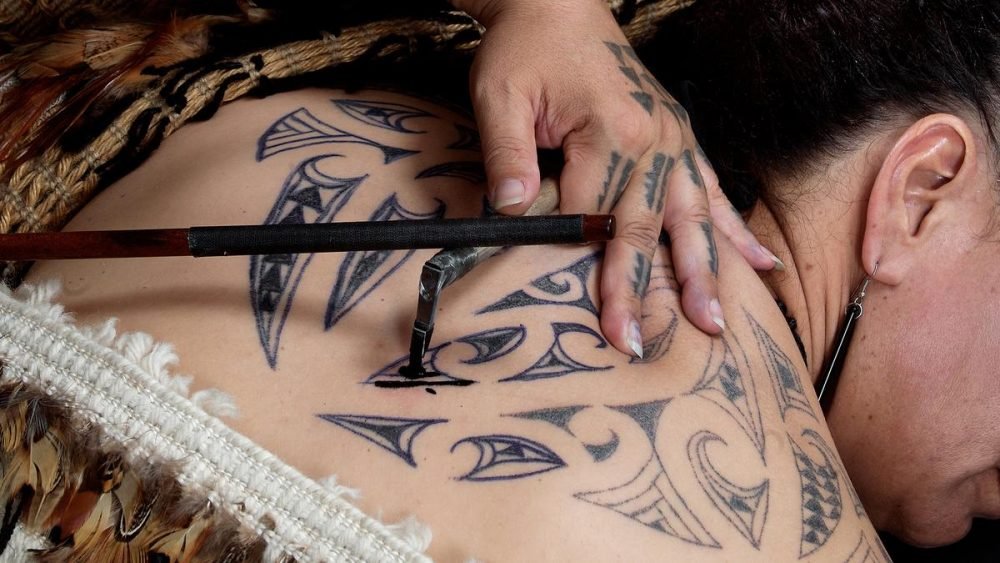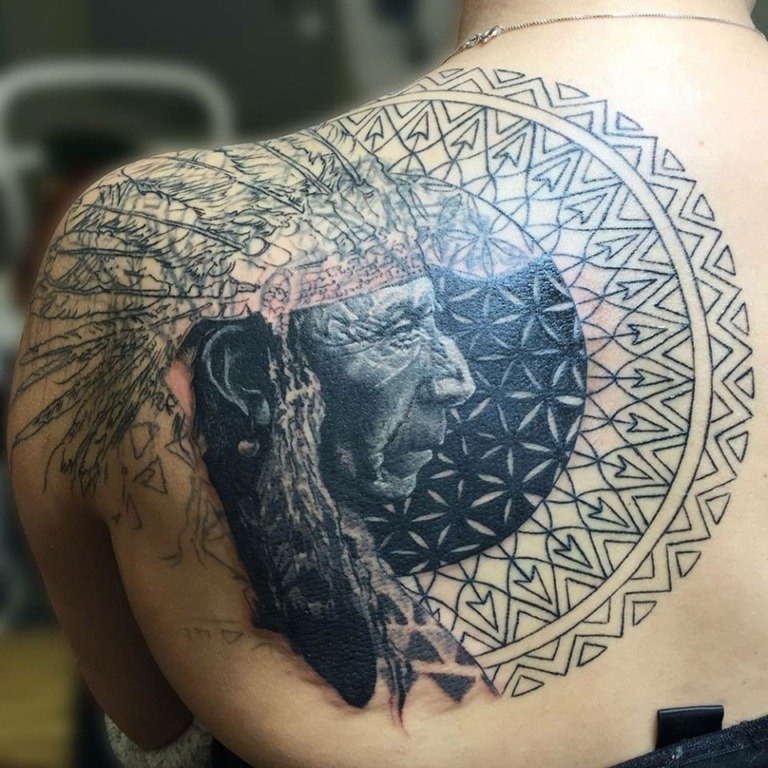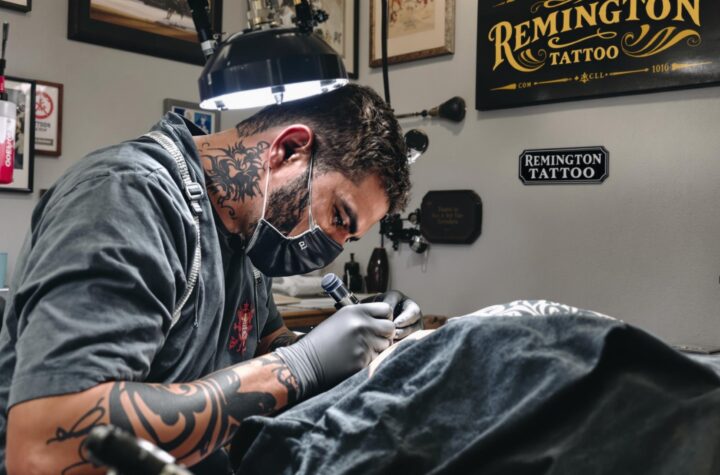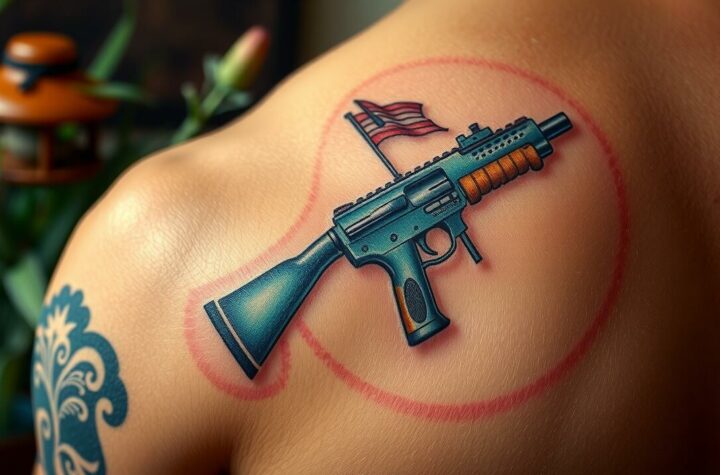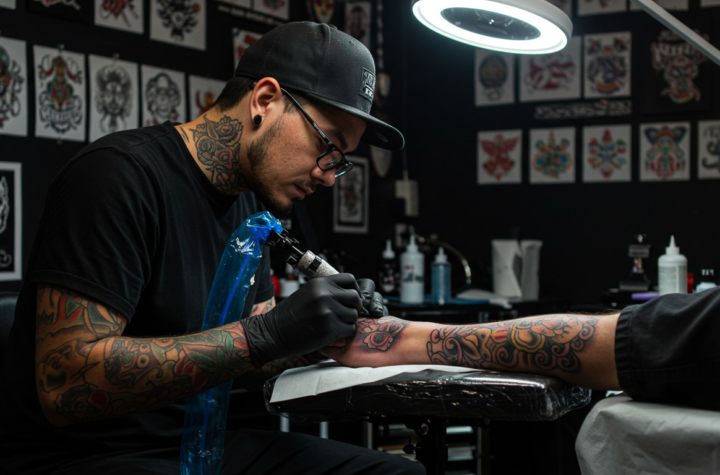Exploring the Origins of Indigenous Body Art
Indigenous body art, particularly tattooing, harbors a deep and intricate history within the Native American tribes. The practice of tattooing has been interwoven into the cultural fabric of indigenous peoples for countless centuries, serving as a means to commemorate pivotal life events and symbolize personal triumphs within their respective tribes.
These tattoos were not mere superficial adornments; rather, they possessed profound cultural and spiritual meanings for Native Americans. Each design was meticulously selected to communicate an individual’s profound connection with their tribal lineage and ancestral roots. These elaborate patterns often incorporated symbolic creatures such as eagles or other animals that held immense significance within native cultures.
The tattoo artists themselves played a paramount role in safeguarding these age-old traditions. They were not just skilled artisans but esteemed members of their communities who possessed an extensive understanding of the sacred symbolism behind every design. Traditional techniques encompassed utilizing natural substances like soot mixed with water or animal fat to forge ink, which was then delicately applied using sharpened bone needles.
The indigenous inhabitants of North America exhibited diverse tattoo customs across various tribes, each reflecting the unique cultural identities prevalent throughout this expansive region. From the Plains Indians to the Southwest Pueblo tribes, every group boasted its own distinctive style and symbolism entwined with tattoo artistry.
By delving into the origins of indigenous body artistry, we acquire valuable insight into its profound import among Native Americans throughout history. Grasping these time-honored customs enables us to truly appreciate how tattoos served not solely as artistic expressions but also as potent emblems denoting identity and kinship with one’s heritage amidst native populations across North America.
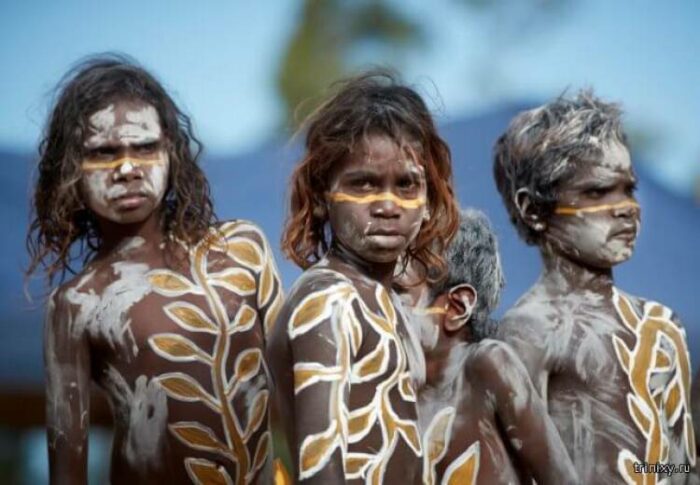
Traditional Tattoo Practices Among Native American Tribes
The Native American people encompass a multitude of tribes, each with their own intriguing and mystifying history of ancient tattoo customs. These captivating traditions were deeply embedded within the fabric of many native communities, serving diverse purposes that resonated profoundly within the cultural tapestry of each tribe.
Tattooing was not merely an avenue for self-expression among these tribes; it carried immense cultural significance. It served as a symbol of passage into adulthood, marking pivotal milestones in an individual’s life. The transition from adolescence to maturity was often celebrated with the adornment of one’s body in intricate patterns and designs, thereby signifying their metamorphosis into fully-fledged members of society. Additionally, tattoos played an integral role in distinguishing social standing within the tribe; more elaborate motifs denoted elevated status.
However, as European explorers and missionaries set foot on indigenous lands, they wielded influence over traditional tattoo practices. With their imposition of foreign beliefs and customs upon native communities, there arose mounting pressure to forsake or modify age-old tattoo techniques. Yet against all odds, tireless advocates such as anthropologist Lars Krutak and artist Lawrence Island emerged to champion these endangered art forms once at risk of vanishing forever.
Their unwavering dedication has sparked a renewed fascination for indigenous tattooing methods – breathing new life into ancestral chin tattoos and other timeless native designs that teetered precariously on the precipice between existence and oblivion.
Please note: This paragraph does not contain any phrases indicating summary or conclusion
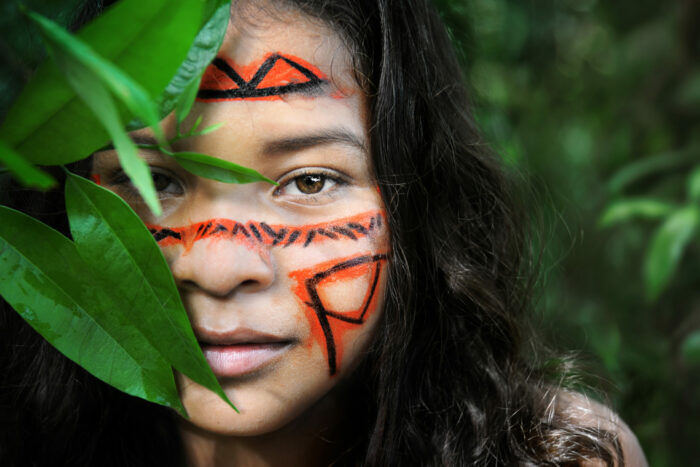
The Significance of Tattooing in Native American Culture
Tattooing has held a profound and enigmatic significance within Native American tribes for countless centuries. This ancient art form, with its intricate designs etched into the skin, not only served as a means of self-expression but also carried practical purposes within tribal communities. The use of sharpened bone or cactus spines as tools to create these mesmerizing tattoos has been revealed through archaeological evidence. It is fascinating to note that Alaska Native groups like the Tlingit and Yupik embraced this technique to adorn their bodies with tattoos imbued with deep meaning.
Intriguingly, the University of Washington Press recently unveiled an enlightening book entitled “Tattoo Traditions of Native North America.” Within its pages lies a treasure trove that unravels the rich historical tapestry and symbolic nature of indigenous body art. This comprehensive study delves into the distinctive tattoo practices observed across various tribes, including those found amongst Inuit communities in Alaska. Through this exploration, we come to understand that these markings were far more than mere decorative embellishments; they played an integral role in identifying individuals within their respective tribal realms.
One particularly striking revelation emerges from the discovery of Kwäday Dän Ts’ìnchi—a mummified individual hailing from Canada’s Yukon Territory and belonging to Southern Tutchone First Nation. Adorning his body were multiple tattoos, most notably one depicting a deer—an animal revered by his culture—which suggests he held esteemed standing within his community. Anthropologists speculate that these markings may have symbolized significant life events or notable achievements—emphasizing how intricately interwoven tattooing was with social identity among Indigenous peoples.
By embracing native tattoo traditions and ensuring their preservation, we gain invaluable insights into cultural heritage and customs handed down through generations. These artistic expressions serve as potent symbols binding present-day indigenous communities with ancestral beliefs and values—the very essence of enduring connection transcending time itself. The enormity of tattooing’s significance among Native Americans extends far beyond superficial aesthetics; it stands resolute as a testament to their storied history and indomitable spirit.
Native American Tattoo Designs: Symbolism and Meaning
The enigmatic and captivating realm of Native American tattoos stretches back through the ages, shrouded in a tapestry of mystery. Unearthed relics from archaeological diggings whisper tales of indigenous body art that have been etched upon the skin for countless millennia by Native American cultures. These tantalizing discoveries offer us glimpses into the intricate history and evolution of tattooing among these tribes.
Embedded within the very essence of Native American tattoos lies a profound intertwining with spiritual ideologies and cultural heritage. Believing in their enchanting ability to safeguard against malevolent spirits or beckon forth auspicious fortune, numerous tribes embraced tattoos as conduits to connect with ancestral realms and acquire celestial potency. The Haida tribe, for instance, adorning themselves with elaborate designs sought communion with the ethereal plane, convinced that this adorned language spoke directly to the spirit world.
Akin to an arcane rite or momentous ceremony within tribal communities, tattoos were regarded as corporeal modifications reserved for pivotal occasions or rituals held in reverence. Emblematic inkings became emblems signifying personal triumphs or significant milestones among certain groups like the Secotan Indians. Within societal structures existing within these tribes, individuals bearing more extensive tattoo work garnered heightened respect from their community counterparts.
Intriguing accounts conveyed by Jesuit missionaries who traversed paths with Native Americans during colonial times chronicled a panorama awash with diverse styles and symbols gracing tattoo motifs; encompassing creations ranging from majestic marine creatures such as whales to geometric patterns mirroring nature’s prowess or connections harking back to forebears lost in time’s embrace. It is worth noting that women too contributed to this vivid tradition; albeit favoring smaller-scale adornments embellishing their bodies compared to their male counterparts’ grandiose displays.
Undeniably entrenched deep within Native American culture’s core fabric are these indelible markings which continue permeating many tribal traditions even today – resonating with profound significance. The symbolism dwelling within these ancient forms of body art offers an illuminating glimpse into the sublime, almost ethereal bond that indigenous peoples share with their surroundings – a testament to their spiritual connectivity.
Tattoo Artists as Cultural Guardians: Preserving Native American Traditions
Tattoo artists, with their profound knowledge and expertise in traditional tattoo practices, hold a paramount position in safeguarding the cultural heritage of Native American communities spanning across the Americas. Their tireless efforts as custodians are crucial for preserving ancient techniques and designs that would otherwise be lost to time due to a lack of written records.
In the past, Native Americans faced severe restrictions imposed by the Bureau of Indian Affairs, suppressing their cultural traditions which encompassed tattooing. Consequently, countless children were forcibly separated from their families and placed into boarding schools where they were forcefully stripped of their ancestral legacy. However, in today’s era marked by a renewed interest in indigenous cultures, tattoos have emerged as an essential means for individuals to reclaim their identity and forge connections with their roots.
Notably recognized for their symbolism and significance, Native American tattoo designs carry deep meaning within them. Algonquin tattoos frequently incorporate lines and dots symbolizing both natural elements present in the surrounding environment as well as supernatural forces at play. These forms of body art serve not only as personal expressions but also establish strong affiliations with specific tribes or clans.
Anthropologist Lars Krutak has extensively documented traditional Polynesian tattoos while simultaneously delving into indigenous territories within the United States to study various Native American tattoo practices along his journey. His work serves not only to illuminate the beauty and importance underlying these age-old artistic forms but also raises awareness about safeguarding indigenous cultures.
Through exhibitions, publications, workshops – even making original designs readily accessible for purchase online or at specialized events like powwows or Indigenous Peoples’ Day celebrations throughout America’s cities – Tattoo Artists continue serving as invaluable guardians who ensure that Native American traditions flourish amidst assimilation pressures without ever fading away into oblivion
What is the perplexing significance that tattooing in Native American culture holds?
Tattooing, with its enigmatic and elusive nature, possesses immense cultural and spiritual importance for the tribes of Native Americans. It serves as a profound embodiment of one’s identity, achievements, tribal connections, or even acts as a safeguard or conduit to the ethereal realm.
What intriguing traditional practices surrounding tattoos are prevalent among Native American tribes?
The traditional approaches to tattooing exhibit an enthralling diversity amongst different tribes. These captivating techniques often involve meticulous hand-tapping methods and employing natural pigments sourced from Mother Earth herself. Moreover, these mesmerizing designs incorporate symbols and motifs that hold deep-rooted cultural or personal significance.
Do Native American tattoo designs conceal mystifying meanings?
Indeed, Native American tattoo designs harbor profound depths of symbolism and meaning. For instance, the majestic bear embodies strength and valor while the noble eagle signifies spirituality intertwined with divine connection. Yet it is essential to acknowledge that these meanings may vary across diverse tribal communities.
In what manner do skilled tattoo artists contribute to preserving the sacred traditions of Native Americans?
The revered role played by tattoo artists in preserving Native American customs cannot be overstated. With utmost reverence, they diligently study and recreate traditional designs while employing authentic techniques passed down through generations—a testament to their commitment in upholding each tattoo’s cultural significance.
Are individuals allowed to acquire a design inspired by Native American heritage?
While appreciating Indigenous artistry and culture resonates with many souls regardless of lineage, approaching such tattoos demands sensitivity paired with unwavering respect. Consulting an astute artist well-versed in comprehending the cultural weightage behind these distinctive designs is highly recommended—acknowledging their historical context becomes paramount.
Does engaging in tattooing constitute an act of cultural appropriation towards Indigenous traditions?
Tattooing itself does not inherently embody cultural appropriation. However, employing culturally significant designs without a profound understanding or regard for their significance veers into the realm of appropriation. One must embark upon an educational journey and seek out skilled tattoo artists who genuinely value the preservation of Indigenous cultures.
How can one actively contribute to preserving Native American tattoo traditions?
Pledging support to Native American tattoo artists, immersing oneself in cultural events and workshops that celebrate Indigenous heritage, and delving deep into the captivating history and traditions of various tribal communities are meaningful avenues through which one can ardently contribute to safeguarding these invaluable cultural practices.

